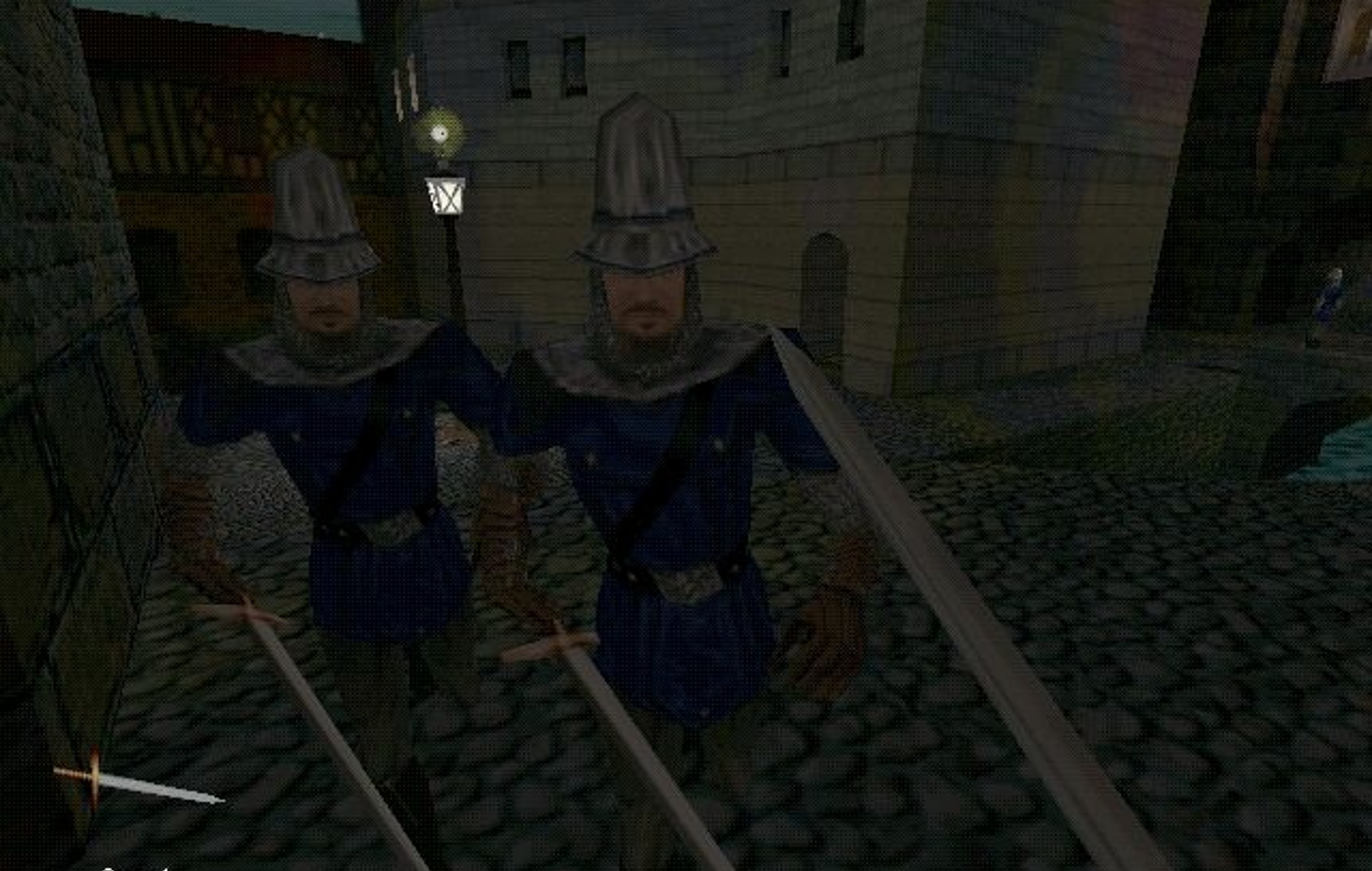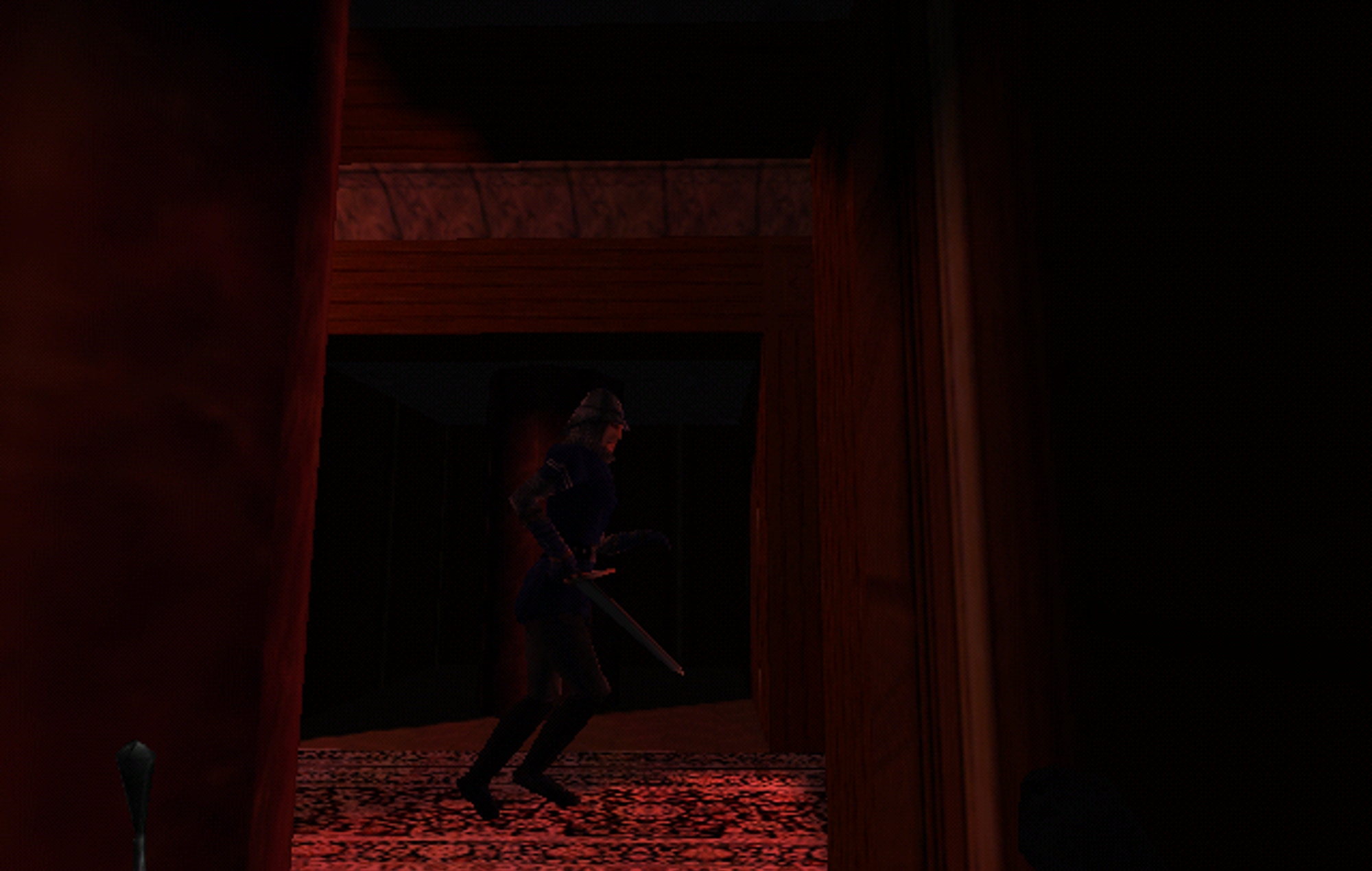
Stealth games are one of the industry’s strangest genres, in that they actively encourage players to avoid engaging with the game’s own systems. They ask you not to interact with enemies, not to be seen or heard. The ultimate achievement in a stealth game is to “ghost” a level, to complete it in a way that suggests you were never there at all.
- READ MORE: ‘Kirby and the Forgotten Land’ review: a breath of fresh air
This counterintuitive approach to play is perhaps why most modern games that feature stealth do so as an option. Titles like Dishonored, Assassin’s Creed Valhalla and Metal Gear Solid 5 let you choose to be stealthy if you want. But you can play these games as pure action experiences and they work equally well. “True” stealth games that focus purely on evasion and distraction are few and far between.
Which makes my next point, that Thief 2: The Metal Age remains the best stealth game ever made, sound like a backhanded compliment, as if the only reason this is true is that nobody else has tried. But putting aside the fact that other true stealth games have released since, like Splinter Cell and Mark Of The Ninja, Thief 2 remains a singular stealth experience, and it’s intriguing to ask why. Why is Thief 2‘s stealth is so much more compelling than the partial offerings of games like Dishonored and MGS? What does it do that those games don’t, and how does it make avoiding interaction so singularly compelling?

To answer that question, we need to go back to 1998, and the launch of Thief: The Dark Project. Looking Glass Studios’ pioneering stealth game was not originally meant to be a stealth game at all. Instead, the initial concept was for a grim fantasy RPG based on Arthurian Legend. Named Dark Camelot, Looking Glass’ early concept was much broader, intended to offer a range of different approaches to missions. But the team couldn’t figure out what those approaches would be, and so the project eventually switched to focus exclusively on stealth.
It’s this specificity that ensured Thief‘s legacy, because the whole project switched from flailing about in search of a hook, to solving the problem of making stealth engaging. Looking Glass set about creating a whole roster of systems in service of sneaking. Players would be vulnerable in the light, but able to conceal themselves completely in shadow. Guards, meanwhile, would have multiple states of awareness, able not just to be active or passive, but to appear suspicious of the player’s presence, and actively hunt them down.
Much of this might seem unremarkable today, as similar systems are commonplace in other stealth games. But Thief has other mechanics that have been replicated far less often. Take for example, it’s floor simulation. Thief features many different floor types such as stone, wood, grass, and metal, each of which makes a different level of noise when the protagonist Garrett steps on them. Most modern stealth games don’t include this feature, but its effect on Thief‘s game design is profound, transforming every level into a maze of potential hazards and forcing you to think hard about every step you take. Although it may seem silly that the footsteps of a master thief make so much noise, if you’ve ever tried to sneak around your own house at midnight, you’ll know how loud every creak of a floorboard sounds in the dead silence of the witching hour.

Indeed, what truly elevates Thief into masterpiece territory is how every aspect of its design feeds into the thrill of trying not to be seen or heard. While visually Thief may look simplistic today, its ability to render gloomy environments (despite a lack of dynamic lighting systems) remains impressive. But it’s the game’s eerie, surrealist ambient soundtrack that is crucial to staving off the ravages of time, lending Thief its distinctively leaden atmosphere that makes crouching behind a stack of crates utterly fraught with tension.
These elements and so much more make Thief: The Dark Project one of the most influential games ever made. However, The Dark Project is also a flawed gem, visibly bearing the scars of its RPG heritage. The prevalence of undead enemies is one example of this, although in some ways those enemies are key to the original game’s uniquely terrifying atmosphere. A deeper issue is that many of Thief‘s levels don’t facilitate stealth particularly well. The narrow corridors of Cragscleft prison, for example, make sneaking around awkward, while the game’s latter half is filled with gimmicky missions like ‘Undercover’ that don’t really pay off.
Thief 2, by comparison, was built as a stealth game from the ground up. Its fifteen massive levels creatively explore all the potential situations a thief might find themselves in, from casing out lavish manner houses, to kidnapping, to its iconic First City Bank & Trust, perhaps the single greatest heist mission in videogame history. Indeed, its best missions are those with the most daring premises. In ‘Framed’ for example, players are tasked with infiltrating the headquarters of the City Watch to plant evidence incriminating a notable watch Lieutenant. Meanwhile, ‘Life of the Party’ Thief 2‘s most famous mission, has you crashing an extravagant ball hosted by the game’s antagonist Karras, by skipping across the city’s rooftops to access the looming, heavily guarded tower of Angelwatch.

But Thief 2‘s better understanding of its subject matter runs deeper than individual mission highlights. It’s fundamentally embedded in the game’s theme of industrialisation. Whereas the original Thief‘s levels were often abstract to the point of being chaotic, the sequel’s banks, warehouses and police stations are more logical and believable spaces, which makes their layouts easier to navigate, and their challenges more engaging to overcome. It’s innately more satisfying to rob a bank, which has clearly defined obstacles and security, than a tomb filled with looping tunnels and unpredictable traps.
The structure of the campaign itself is also more rewarding. The Metal Age provides Garrett with a clear antagonist from the beginning. The religious cult leader Karras is Garrett’s mirror image, a confidence trickster who uses the systems of society to extort his followers. His mechanist religion also provides the perfect challenge for a master thief, guarding the city’s infrastructure with advanced security measures, from surveillance cameras to tank-like automatons.
Thief 2 perfects the ideas that the original pioneered. While the visuals may have aged and some of its ideas may be familiar to us now, the incredible atmosphere and ingenious level design have lost none of their seductive power. Thief 2 doesn’t simply accommodate stealth, it makes every click of Garrett’s boots, every doused torch, and every rattled lock endlessly rewarding. That’s what makes it a peerless stealth experience, and until someone tries to innovate on its ideas, rather than simply recycling parts of them for larger games, it will remain the pinnacle of sneaking through shadows.
Thief 2: The Metal Age is available to play on PC.
The post Why ‘Thief 2: The Metal Age’ remains the best stealth game ever made appeared first on NME.